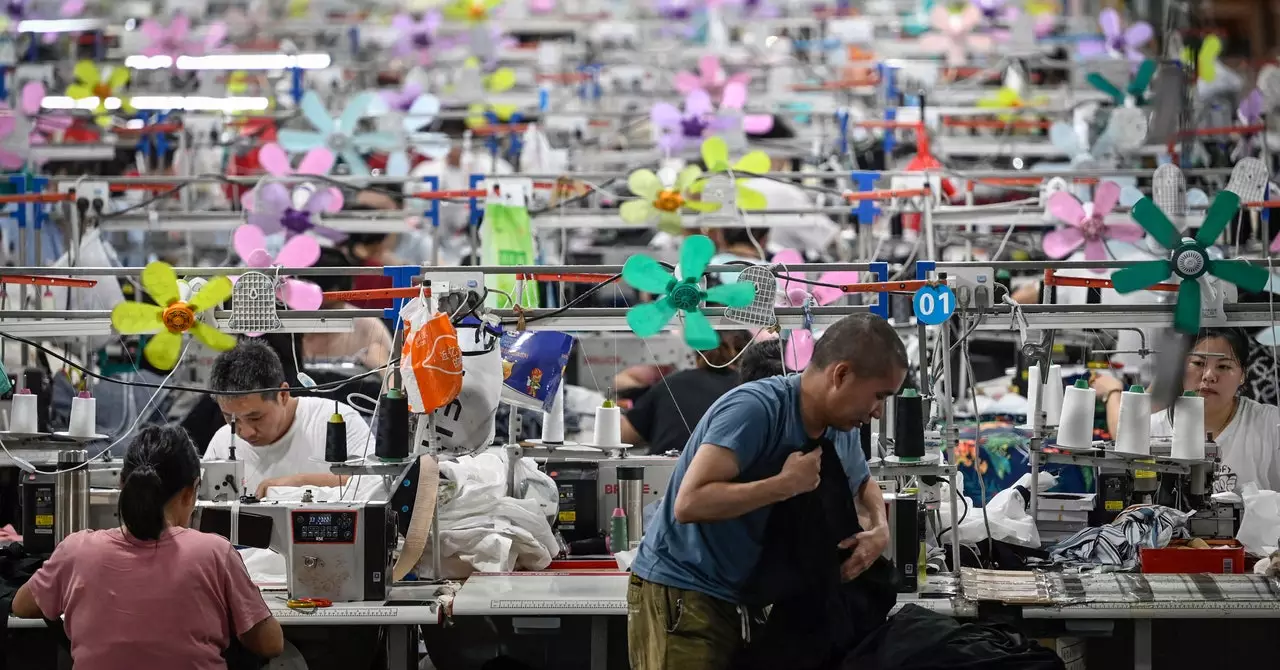In recent years, the fast-fashion industry has shifted into overdrive, with brands like Shein leading the charge. Established only twelve years ago, Shein has quickly transformed from a startup into a global juggernaut, generating over $30 billion in revenue by 2023. Capitalizing on the insatiable appetite for ever-evolving fashion trends, Shein boasts a staggering collection, reportedly offering around 600,000 items at prices often as low as $10. This accessibility has prompted a shopping frenzy, particularly among Gen Z consumers in the United States, 44 percent of whom purchase items from the brand at least once a month. As convenient as this may seem for the consumer, it poses significant questions regarding the sustainability and ethical implications of such rapid consumption.
At the heart of Shein’s meteoric rise is an intricate web of technology that fuels its operations. The company employs advanced machine-learning algorithms to analyze customer data in real time. This means that Shein can rapidly identify trends and consumer preferences, continuously tweaking its offerings to ensure that its clothing lines stay ahead of the curve. However, this relentless pace reflects not just a business model focused on profit, but also an evolving digital landscape that encourages excessive consumption and throwaway culture. As the company expands its reach through social media promotions, such as the ubiquitous “#sheinhaul” videos, it inadvertently promotes a cycle of overconsumption that thrives on constant novelty and fleeting trends.
While the rapid response to consumer demands may appeal to shoppers seeking the latest styles, it comes with an alarming environmental footprint. Shein’s sustainability report for 2023 indicated a shocking 16.7 million metric tons of carbon dioxide emissions—a figure that exceeds the annual emissions of four coal-fired power plants. Critics argue that the environmental implications of Shein’s business model are compounded by its online-only approach and ceaseless production cycle. The company has also faced accusations of contributing to textile waste, exacerbating microplastic pollution, and utilizing exploitative labor practices, raising deep ethical concerns about the cost of affordable fashion.
Compounding these problems is the integration of artificial intelligence into the fast-fashion equation. While AI could theoretically be harnessed to improve operational efficiency and reduce environmental impacts, in Shein’s case, it appears to primarily serve as a catalyst for rapid production rather than a means for sustainable practices. In a sector already criticized for its eco-unfriendliness, the use of AI accelerates mass manufacturing rather than fostering mindful consumption or sustainable sourcing strategies. There is growing concern among climate advocates that, rather than mitigating environmental harm, AI could be intensifying these problems by enabling ultra-fast production cycles that ignore the underlying issues of waste and resource depletion.
As accusations mount and climate reports highlight the dire consequences of Shein’s production practices, the question remains: Can the fast-fashion model be reconciled with sustainability? Shein plans to reduce its carbon emissions by 25 percent by 2030 and achieve net-zero emissions by 2050, but skeptics argue that these commitments do not align with the operational realities of its business model. The very structure that allows Shein to thrive—rapid production, low prices, and a constant influx of new styles—also creates an immense and unsustainable burden on the environment.
As consumer awareness grows, one wonders if brands such as Shein can evolve beyond their current frameworks. The intersection of technology, consumer demands, and environmental stewardship is fraught with challenges, yet critical to addressing the future implications of fashion. Ultimately, the responsibility lies not only with corporations but also with consumers to make informed choices. The fashion industry may need to reckon with the paradox of its existence—how to remain trendy while combating the irreparable harm caused to our planet.


Leave a Reply